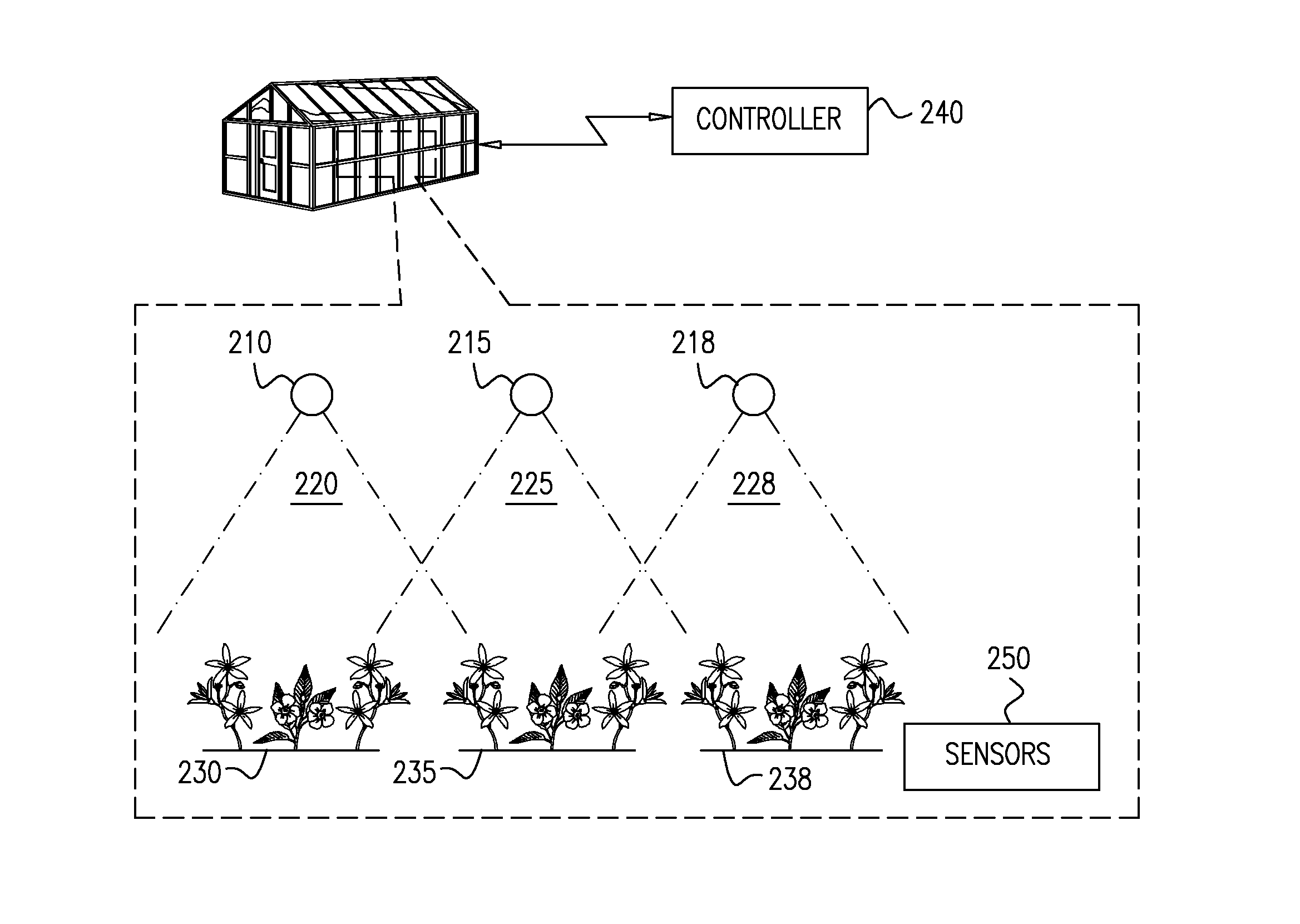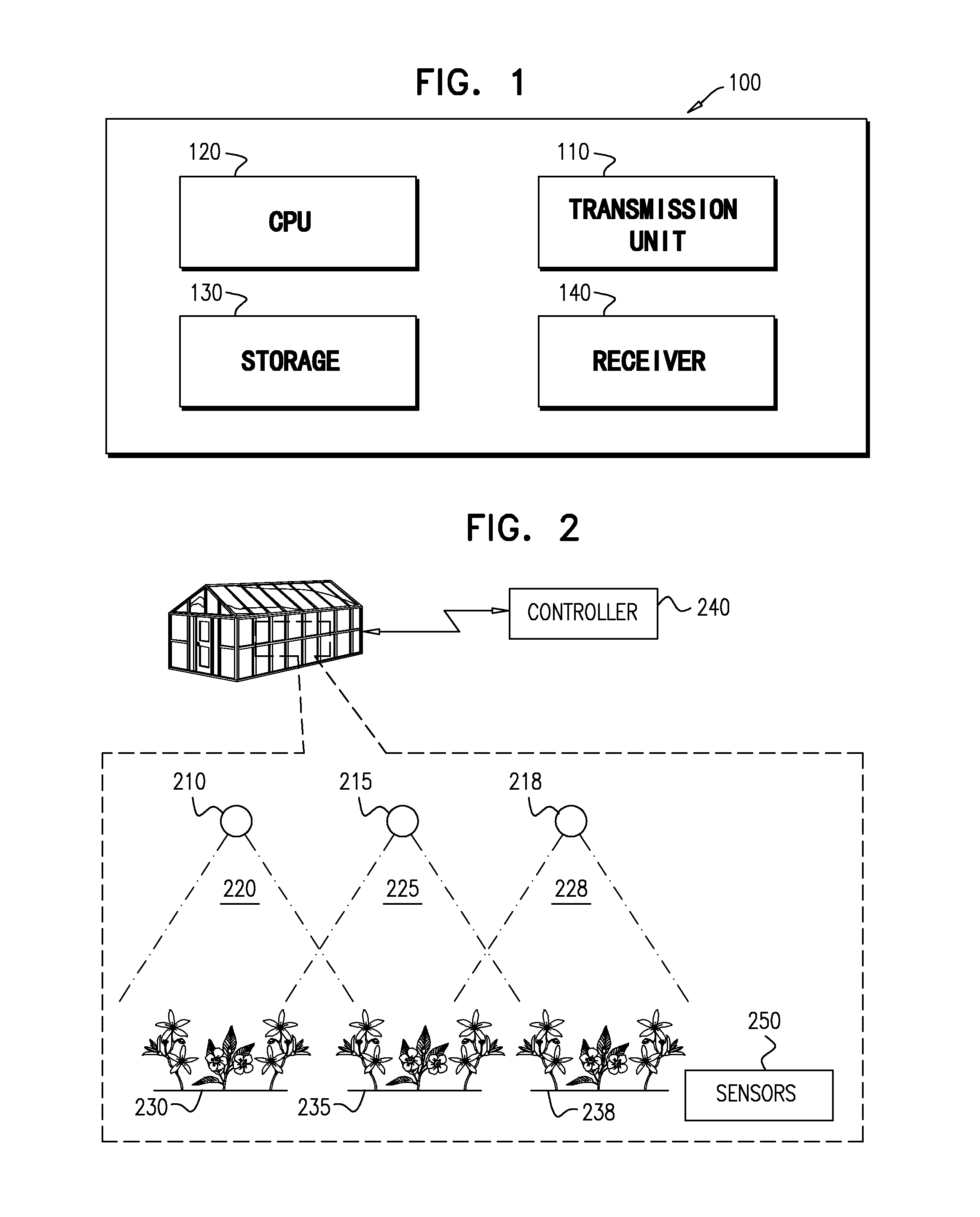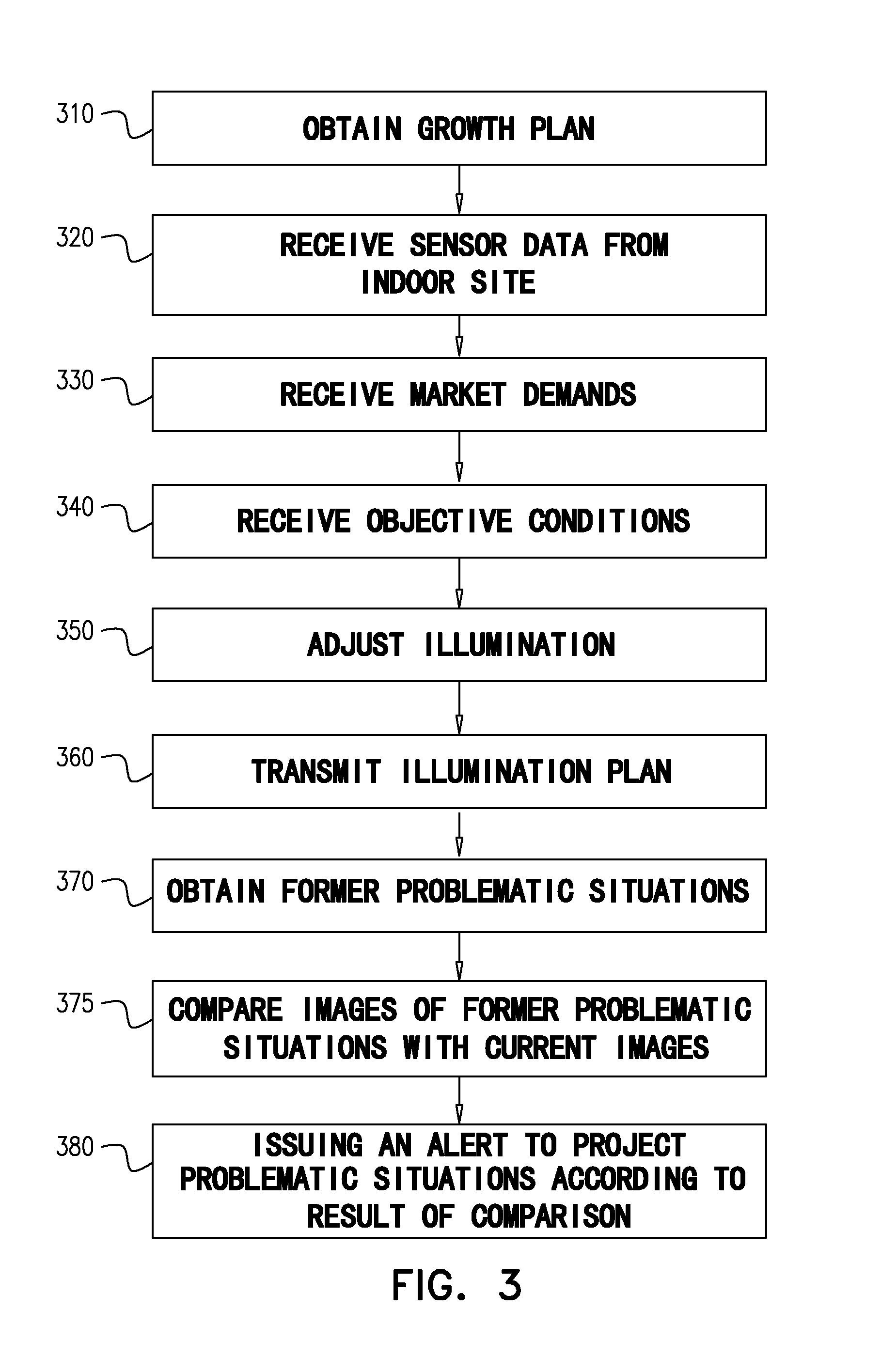A system and method for providing illumination to plants
a technology for providing plant illumination and plants, applied in the field of plant illumination, to achieve the effect of reducing the light intensity emitted
- Summary
- Abstract
- Description
- Claims
- Application Information
AI Technical Summary
Benefits of technology
Problems solved by technology
Method used
Image
Examples
Embodiment Construction
[0026]The subject matter discloses a system and method for plants illumination. The system comprises a plurality of illumination units located in a predefined area, at least two of the plurality of illumination units emit light in an intermittent manner. The system also comprises a control unit connected to the plurality of illumination units for determining the properties of light emitted by at least two of the plurality of illumination units. The control unit is also configured to synchronize the signals emitted by the plurality of illumination units and obtain measurements from the sensors attached to the illumination units in order to improve growth of the plants.
[0027]FIG. 1 shows a computerized system for controlling the plurality of illumination units, according to exemplary embodiments of the subject matter. The computerized system 100 is a user's standard electronic device, such as a laptop, telephone, tablet or PC, in which an interface is used to control the performance o...
PUM
 Login to View More
Login to View More Abstract
Description
Claims
Application Information
 Login to View More
Login to View More - R&D
- Intellectual Property
- Life Sciences
- Materials
- Tech Scout
- Unparalleled Data Quality
- Higher Quality Content
- 60% Fewer Hallucinations
Browse by: Latest US Patents, China's latest patents, Technical Efficacy Thesaurus, Application Domain, Technology Topic, Popular Technical Reports.
© 2025 PatSnap. All rights reserved.Legal|Privacy policy|Modern Slavery Act Transparency Statement|Sitemap|About US| Contact US: help@patsnap.com



